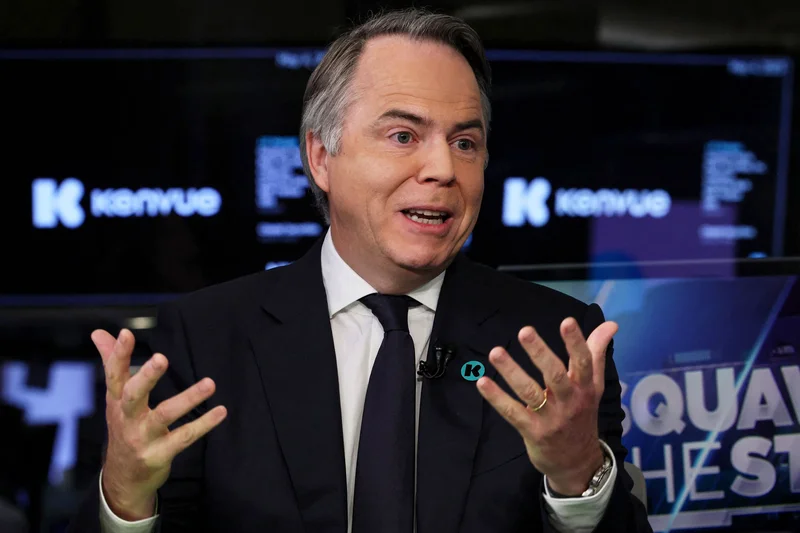Article Directory
Kimberly-Clark Swallows Kenvue: A $48.7 Billion Bet on…What Exactly?
The news dropped this morning: Kimberly-Clark is set to acquire Kenvue in a cash-and-stock deal valuing the consumer health giant at a hefty $48.7 billion. On the surface, it looks like a classic consolidation play. Kimberly-Clark gets its hands on Kenvue's portfolio of well-known brands (Aveeno, Band-Aid, Tylenol, the list goes on), and Kenvue shareholders get a mix of cash and Kimberly-Clark stock. But digging into the numbers, a few things don't quite add up.
The Synergy Mirage
Kimberly-Clark is touting $1.9 billion in cost synergies and another $500 million in revenue synergies. That's a bold claim, and synergy projections always deserve a healthy dose of skepticism. Companies routinely overestimate the benefits of mergers, often conveniently forgetting about integration costs, cultural clashes, and plain old execution risk. They're also planning to reinvest $300 million of that $2.4 billion, so the real number is $2.1 billion.
Consider the cost synergies. Kimberly-Clark expects to spend $2.5 billion in cash over the first two years to achieve these savings. That's a significant upfront investment. Are those synergies truly "low-hanging fruit," or are they predicated on aggressive cost-cutting that could damage Kenvue's brand equity? (We've seen that movie before, and it rarely ends well.) The breakdown of where these cost savings will come from remains vague, which makes it difficult to assess their feasibility.
Then there's the revenue synergy target of $500 million. This is where things get even murkier. How exactly does combining Kimberly-Clark's diaper and tissue business with Kenvue's over-the-counter drugs and skincare products generate an extra half-billion in sales? Cross-selling opportunities are often touted in these situations, but how many consumers buying Huggies are suddenly going to add Neutrogena to their cart? I've looked at hundreds of these filings, and this particular synergy claim feels…aspirational, to put it mildly.
The Valuation Puzzle
The deal values Kenvue at 14.3x its last twelve months (LTM) adjusted EBITDA (earnings before interest, taxes, depreciation, and amortization). That multiple shrinks to 8.8x if you include the projected synergies. But here's the rub: those synergies are, as we've established, far from guaranteed.

Furthermore, Kenvue was spun off from Johnson & Johnson relatively recently. It's still finding its footing as an independent entity. Is Kimberly-Clark paying a premium for a company that hasn't yet fully realized its potential? It’s certainly possible.
The transaction also hinges on Kimberly-Clark’s ability to fund the cash component through a mix of balance sheet cash, new debt, and the sale of a 51% stake in its International Family Care and Professional business. That's a lot of moving pieces. Any hiccup in those funding plans could throw the entire deal into jeopardy.
Who Really Wins?
Kenvue's Chair, Larry Merlo, says the deal delivers "significant upfront value" for shareholders. Kenvue's CEO, Kirk Perry, believes it will bring "greater value" and "new growth opportunities." Mike Hsu, Kimberly-Clark's CEO, is "excited." Of course, they all are. It's their job to be enthusiastic. Kimberly-Clark to Acquire Kenvue, Creating a $32 Billion Global Health and Wellness Leader - PR Newswire
But who actually wins here? Kenvue's shareholders get a quick payday. Kimberly-Clark gets a bigger portfolio and a chance to cut costs. But the real test will be whether the combined company can deliver the promised synergies and generate sustainable growth.
The deal is expected to close in the second half of 2026. Until then, it's all just projections and promises.
So, What's the Real Story?
This feels like a classic case of corporate empire-building, dressed up as a strategic masterstroke. The numbers are ambitious, the synergies are questionable, and the long-term benefits are far from certain. Kimberly-Clark is betting big that it can extract enough value from Kenvue to justify the hefty price tag. But if those synergies don't materialize, this could turn into a very expensive mistake.
